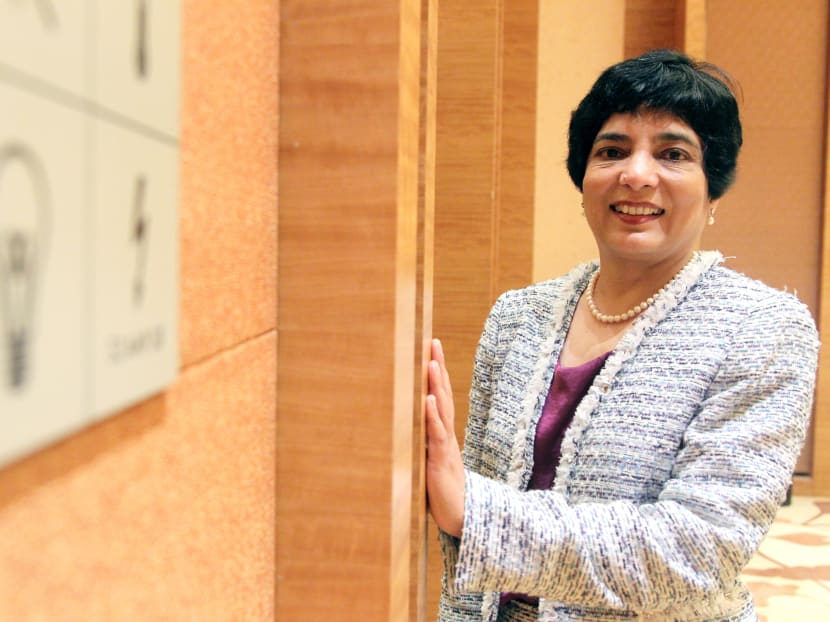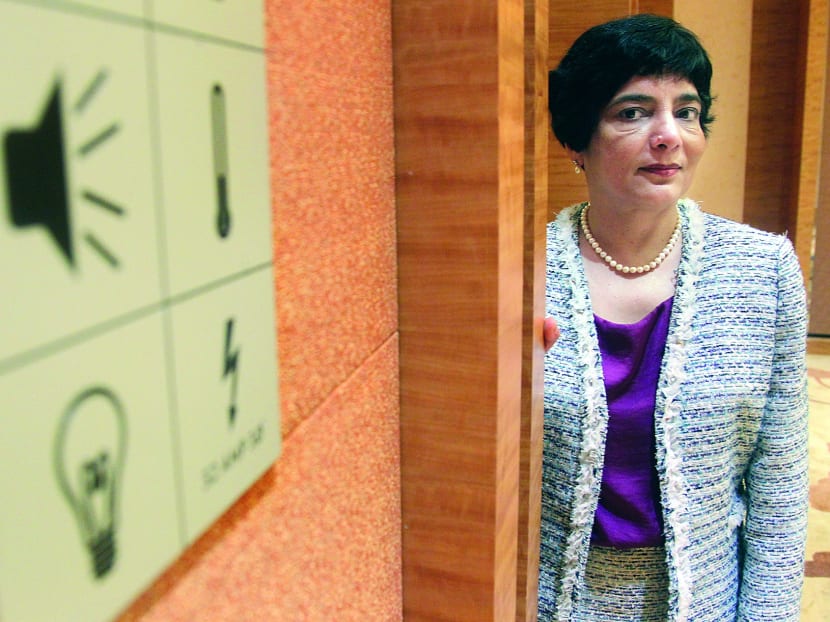Engineer of change
When she was studying chemical engineering at the prestigious Indian Institute of Technology in Bombay in the ’70s, Dr Marlene Kanga had trouble speaking to her professors because they were “embarrassed” to be alone with a woman.


When she was studying chemical engineering at the prestigious Indian Institute of Technology in Bombay in the ’70s, Dr Marlene Kanga had trouble speaking to her professors because they were “embarrassed” to be alone with a woman.
“At the time, girls who went on to university took on either an arts or science degree ... and (getting into chemical engineering) was a bit of a sensation because out of a class of 200, there were only six women,” she recalls.
The problem was not only in India. Moving to Australia with her husband in the late ’70s with only A$100 (S$111) in their pockets, she discovered that engineering jobs advertised were for “men and boys”. Every position she applied for, she was invariably asked if she was somebody’s sister or secretary because “no one had ever heard of a woman engineer”.
When she finally did land a job — for which, as a Master degree holder, she was vastly overqualified, at a small company that imported pumps and valves — she was paid only half of what the secretary received.
She had even written to every single engineering company in the yellow pages, some 200 to 300 letters of application in her estimation, before she landed a job at Esso Australia. She was only the second woman engineer to be hired by the company.
It has been quite the journey against the odds for Dr Kanga, who is now the first woman President of Engineers Australia, the country’s industry association. The 59-year-old was one of the key speakers at the World Engineers Summit held at the Marina Bay Sands Expo and Convention Centre.
HALF OF THE BEST BRAINS
Dr Kanga has long been a champion for getting more women into the profession. She had previously led the National Committee for Women in Engineering and, in November 2007, became the first woman and mum to be elected to the board of Engineers Australia.
She has made it her cause to encourage talent diversity in the sector, including by attracting more women into it.
“I made huge changes,” she says. “I believe in changing the rules ... to get more flexibility in continuous professional development for women who are chartered (engineers) and cannot take a career break. We’ve also included diversity in the code of ethics. No other engineering institution in the world had made these changes.”
Citing the “big issues”, such as climate change, that confront the world and which beg for engineering solutions, she adds: “This is an issue not just for women, but for society, because if we don’t get the best and the brightest minds into engineering, we will not get the best innovative solutions for our planet ... And 50 per cent of the best minds are female.”
One would think that 30 years on, with society’s mindset having evolved and the progress the industry association has achieved, that women engineers find themselves in a more enlightened milieu. But that is not entirely the case.
Says Dr Kanga: “When I meet people for the first time, you can see it in their faces: ‘Does she know what she’s talking about? Is she qualified?’ I have to almost put my CV on the table.”
But win them over and they become your greatest fans and allies. She always works on that basis, she notes. “You’ve got to be good at your work ... I’ve learnt to be assertive because you need to speak up.”
MALAYSIA’S INNOVATIVE TOLLWAY MUMS
There are no official global figures for the number of women in engineering, but Dr Kanga estimates that in countries such as Australia, New Zealand and North America, they make up less than 20 per cent of the profession.
Retaining women engineers is a “huge issue” in such societies because of a “tough blokey culture” where women have to work long hours to prove themselves while taking care of their children.
In Australia, some 50 per cent of women engineers do not have children and 25 per cent have only one — Dr Kanga, a mother of two boys, is in the minority. She was, as she tells it, responsible for Esso setting up a childcare centre and changing their policies so she could return to work after having her first child. “So I’ve been a change-maker right from the start.”
According to her, within the first 10 years of graduation, half the women exit the industry.
“If women’s desires aren’t fitted in properly, then they tend to leave. And as an engineer you can do any other job because you have tremendous analytical and mathematical capabilities,” she explains. This exodus “is a terrible thing because you should be able to have your career and fulfil all your other roles as a wife or daughter. It should not be either-or”.
She found inspiration, interestingly enough, in Malaysia. While there for a forum two years ago, she came across a highway maintenance company whose workforce was mainly women doing the electronic monitoring of tolls.
“All this job sharing, they’re very innovative and cost-effective because the women are always thinking. And there’s very low turnover because they don’t want to give up that part-time job.
“So that’s one of the most successful companies in Malaysia, where the women have shown that it is possible to have flexible work-life balance and still make an effective contribution.”
HOSTEL REVOLUTIONARY
The innovative and humanitarian challenges of the profession is one of the things that strongly attracted Dr Kanga to it. People often have the wrong idea that engineering is all about “hard hats, big boots and construction sites”, but really, “it’s enormously creative, it’s intellectually stimulating, it’s an opportunity to make a contribution”.
In this respect, the biggest influence on her was her father, a mechanical and electrical engineer who was also “a bit of an inventor”.
Growing up in Goa without electricity, Dr Kanga could only read until the sun set and sat by an oil lamp at night with nothing to do. It was only in the ’60s, when her father helped to set up the electricity infrastructure for India’s west coast, that the lights went on in her village.
“Our villagers did not know what this electricity meant ... So my father had a meeting and explained that instead of having to carry one lamp from one room to another, they could have a light in every room. They couldn’t imagine that. And when the electricity came, it felt to them as if my father had brought it in and they revered him like a god.”
It was in this that Dr Kanga saw the possibilities of engineering in changing lives.
Without any dolls as a child, her favourite toy was a set of building blocks with which she constructed houses. She excelled in science and mathematics in high school. But in an era where it was “very unusual” for girls to be highly educated, her mother “hated the idea” of her going into engineering, afraid no one would marry her.
At university, where she was Mess Secretary, in charge of organising the menu for the sole girls’ hostel, she was “one of those modern women” and a “change leader” who would ride a motorcycle to the boys’ hostel by herself to negotiate for more rice rations for the girls.
She also staged the “first revolution”, as she calls it, in her hostel. They held a sit-in to protest the fact that the girls’ hostel doors were locked at 9pm, which prevented them from late-night studying at the library.
It is ironic that she declares she “never wanted to be an advocate” for women in engineering — it is just something that seems a natural extension of her passion for the profession. “Engineering is fascinating and I just love it.”
Asked about her biggest challenge, the indomitable Dr Kanga cites a classic Simon and Garfunkel song: “No challenge is insurmountable. I just don’t take no for an answer. It’s like that song The Boxer, you sort of have to take the punches, get up and keep going.”





